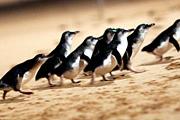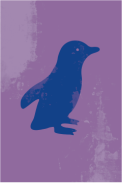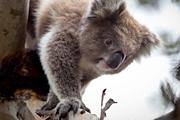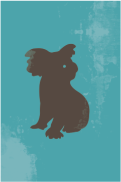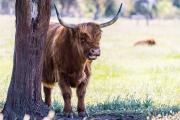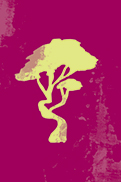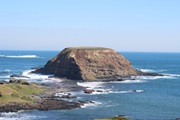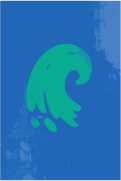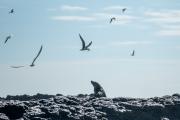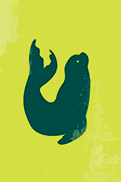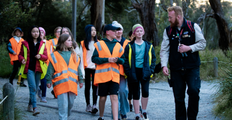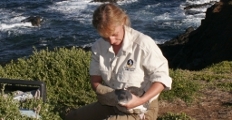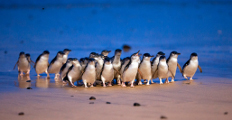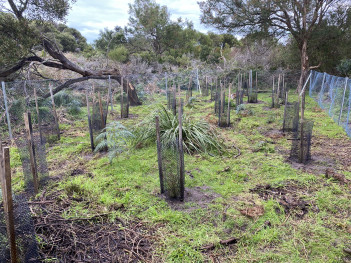Conservation News - Winter 2023
Welcome to the third edition of the quarterly conservation wrap up that takes you behind the scenes at the Nature Parks as our team shares key updates on projects, research and the amazing work being done to support conservation on Phillip Island (Millowl).
Marine Species
Penguins (Guyup)
Penguins in winter and weather outlook
By Team Penguin
During the winter lifecycle of little penguins, most of the excitement is out at sea.
In winter, penguins can be away for weeks, travelling much longer distances than they do in spring. Interestingly, adults and first-years don’t share the same foraging area in winter, with adults usually going to Port Phillip Bay and first-years travelling all along the Victorian coast, sometimes crossing the border with South Australia.
Nevertheless, our visitors are lucky as Phillip Island (Millowl) is one of the few places in the world where penguins still come ashore even though they are not breeding. When little penguins come ashore, they usually spend a couple of days in the colony. There were also a few penguins that started breeding during Autumn.
The weather outlook to spring and summer is concerning for little penguins. Scientists from the CSIRO report that Australia's southeast is in for a marine heatwave that's literally off the scale. The Bureau has issued an El Niño Alert, indicating strong event in spring, which could lead to drier and warmer conditions in southern and eastern Australia. The strong El Niño brings severe storms and heatwaves, reducing penguins’ foraging success and increasing heat stress. The ongoing global warming trend continues to impact climates worldwide and has caused significant temperature increases in 2023.
Unpacking the lifelong secrets of little penguins’ success – from hatching to the end of life
By Andre Chiaradia
Through the lens of little penguins, scientists from the Nature Parks and the University of Strasbourg, France, explored the differences among individuals in a population and their impact on overall fitness during their entire life. The aim is to understand whether these differences arise from fixed traits or by random chance, in a study published in Evolution. Using little penguins as our model, 18 traits affecting their fitness were examined and showed significant fitness disparities. Penguins with the ability to have more breeding events and greater success in each event (which is achieved through better foraging) exhibited higher fitness. While factors like chance, individual quality, and trade-offs played a role, individual quality was the primary driver of fitness variation. Investigating why certain penguins excel helps us understand natural selection's effects on these traits and better ways to their conservation into the future.
Joly, N., A. Chiaradia, J.-Y. Georges and C. Saraux (2023). "Unpacking the Lifelong Secrets of Little Penguins: Individual Quality, Energy Allocation, and Stochasticity in Defining Fitness." Evolution. qpad126.
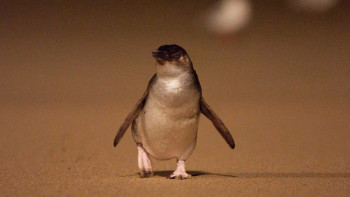
Image 1: Little penguin
How little penguins in sub-colonies outsmart environmental chaos in search of food and love
By Andre Chiaradia
A study into sub-colonies within Phillip Island’s 40,000 strong little penguin population has discovered differences in how they reproduce and find food. Scientists from the Nature Parks and Monash University wanted to understand differences within the colony on how the penguins forage and breed. They focused on two distinct subgroups, or sub-colonies, located about two kilometres apart. Through the deliberate decision to study sub-colonies, the study uncovered distinctions that can provide valuable insights for tailoring conservation efforts to meet the specific needs of each sub-colony. During the early breeding stages, one sub-colony faced more challenges finding food, while the other showed higher breeding and foraging success rates. This dynamic shifted as the breeding process progressed and chicks became more independent. The research highlights the importance of considering sub-colony level differences in managing and conserving the mega colony of little penguins at Phillip Island (Millowl) by customising conservation initiatives that address the unique requirements of each sub-colony.
Pulvirenti, J., R. D. Reina and A. Chiaradia (2023). "Exploring subcolony differences in foraging and reproductive success: the influence of environmental conditions on a central place foraging seabird." Royal Society Open Science 10(6): 220362.
Science in practice to reduce light pollution at Phillip Island
By Andre Chiaradia
Today, light pollution is rising globally, fading the availability of natural dark environments which are essential for the wellbeing of nocturnal organisms. The most severe ecological issues caused by artificial lights is mass mortalities of seabirds, with short-tailed shearwaters facing the greatest risk. Artificial lights during their initial flights to the sea, put them at risk of collisions with illuminated structures and becoming prey or road casualties if grounded.
A series of studies by the Nature Parks exploring the negative effect of artificial lights on shearwaters has guided conservation efforts to reduce light pollution and improve traffic management to mitigate the harmful impact of artificial lights on wildlife. Our scientific findings have been shared with local authorities, road agencies, and state organisations. Phillip Island (Millowl) is also one of three successful stories of light pollution mitigation mentioned in the National Light Pollution Guidelines for Wildlife. The Victorian State of Environment Report added light pollution as one indicator, due to the awareness of light pollution's negative effect on short-tailed shearwaters.
When artificial lighting is necessary, we recommend keeping it dim and time-restricted to minimise its adverse effects on wildlife and their natural habitats. This information has prompted a successful campaign with residents and local businesses to reduce light usage during the critical time of shearwater fledging. Some planning applications near shearwater colonies have adopted these recommendations, leading to practical conservation outcomes.
The new roundabouts on the Phillip Island Road, the Penguin Parade masts, and the recently constructed Penguin Parade Visitor Centre have all been designed to minimise the disruption caused by artificial lights on penguins, shearwaters, and the overall wildlife.
As we restore habitats on islands and reintroduce nocturnal native species, preserving the integrity of the natural skylight becomes even more crucial. While we work locally to address light pollution, the Nature Parks is contributing by raising awareness of the negative effect of light pollution at a global scale.
Seals
By Dr Rebecca McIntosh
There was an incredible effort during winter to rescue an Australian fur seal pup which was spotted entangled in white mesh at Seal Rocks.
The fur seal pup, less than a year old, was first sighted by a drone being flown for permitted Monash University and the Nature Parks research at the Seal Rocks colony, and later viewed by West Coast Cruises who reported the sighting to the Nature Parks.
Adam Yaney-Keller, a PhD student with Monash University and Phillip Island Nature Parks, was on site studying the use of thermal imaging drones for detecting fur seal entanglements in plastic debris and exploring the impact of being entangled on individuals and populations.
Adam was able to view the seal pup up close and confirm the pup was suffering. The mesh had created a noose around its neck and was cutting in deep. With the support of the Victorian Fisheries Authority, the team landed the boat at Seal Rocks after waiting for calm seas, the team were then able to creep up behind the approximately 15kg pup and capture it using a specially designed funnel net.
Adam and assisting student Ebony McIntosh were able to capture the seal and carefully remove the mesh before releasing the pup.
The pup ran away quickly, making it difficult to determine if this entanglement has resulted in long-term effects on the seal. Adam’s PhD studies will hope to shed light on this.
It is not easy to catch entangled seals, especially at breeding sites. It is important to balance helping one seal, with the impact of disturbing the other seals onsite. We always try to minimise affecting the natural pattern for the healthy seals.
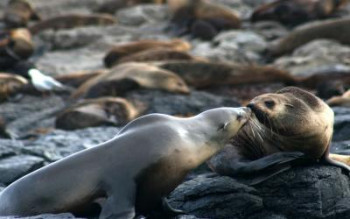
Image 2: Australian fur seals
Threatened species
Bush stone-curlews
By Aimee Beck
The bush stone-curlews have settled well into their respective aviaries. Currently the adult male and the two juvenile males are being housed together in Aviary 1, while the adult female and the juvenile female from the first successful clutch are being housed together in Aviary 2. All birds are maintaining healthy weights and displaying natural behaviours such as foraging through mulch and leaf litter for bugs, as well as occasionally catching their own wild mice.
Coming into the breeding season, there has been an increase in call activity from both aviaries, however the plan is to keep them separate for this breeding season. Whilst this means we will not be expecting any chicks, we can still expect to see breeding behaviours such as beautiful mandle displays and more frequent calling. It is a great time of year to walk through the Koala Conservation Reserve woodlands and enjoy hearing the distinct sounds of the bush stone-curlews. Hopefully this will be a common sound on Phillip Island (Millowl) in the future.
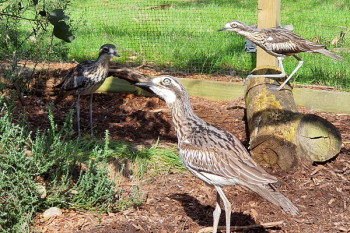
Image 3: Bush stone-curlews at the Koala Conservation Reserve
Threatened flora planting
By Susan Spicer
Rangers and Field Service Officers recently planted 23 crimson berry plants within a herbivore exclusion coop at Cape Woolamai. To improve genetic diversity in the population, some of the plants came from the Friends of the Prom Nursery, with the remaining majority grown at the Barb Martin Bushbank Nursery from local stock cuttings. Along with the crimson berry plants, approximately 85 other indigenous shrubs were planted for habitat enrichment at Cape Woolamai and a further 160 habitat enrichment plants were planted at the YCW-the Gap crimson berry site. In the dunes of Cape Woolamai, 70 peninsula daisy-bushes and a mix of other dune daisy species were planted.
Following the 100% survival success of the 2022 planting of 12 salt Lawrencia plants at Fishers Wetland, 96 more were recently planted over two sites at Fishers Wetland.
The self-recruiting currant wood within the herbivore exclusion coop and tree guards at Rhyll Wetland continue to thrive. To reinforce the population, 18 currant wood plants grown from cuttings at the Barb Martin Bushbank Nursery were planted back into the population.
Image 4: Flora revegetation
Flora revegetation, Barb Martin Bushbank Nursery
By Mitch Burrows
Since the revegetation season kicked off in May, a total of 2,376 plants have gone in the ground across four project areas: Penguin Parade and surrounds, Rhyll landfill remediation, crimson berry populations, and Cape Woolamai.
To date, a total of 304 work hours have been spent revegetating 5.2ha of land managed by the Nature Parks for the 2023 season.
Many plants propagated for the revegetation season this year have been committed to the ‘Future Proofing Little Penguins’ project on the Summerland Peninsula. The remaining ~23,000 plants earmarked for this season will be planted throughout the recently created firebreak zones to increase succulent plant species abundance in these identified areas.
Geographic information system (GIS)
By Bhuban Timalsina
The Wildlife Rescue Dashboard has undergone revisions over the past few months, aiming to provide real-time data which facilitates more efficient collaboration among our Conservation team members. This enables informed decision-making and allows for the seamless documentation of the team's response efforts during rescues. The implemented revisions encompass enhancements in user interface design, data visualisation, and data integration.
Maps and web maps have also been created specifically for the wildlife road sign project. These visual tools offer valuable information about the locations where the signs will be placed, helping to raise awareness about potential wildlife crossings and thereby enhance road safety. The maps showcase designated areas and routes, while the interactive web map documents the change in sign locations and displays both current and removed sign locations.
Koala Conservation Reserve
By Daniel Kallstron
Three koalas currently have joeys that appear to be progressing very well. Together with their mothers and a male koala, they have been moved into the Koala Boardwalk, since mid-September, to be viewed from the boardwalks and to have more access to suitable feed trees. The Koala Conservation Reserve is also hosting a young male koala from Warburton who has been raised by a wildlife carer after being found abandoned on the roadside. He requires access to larger trees to work on body condition and muscle tone before being released back into the wild.

Image 5: Vicki and joey
Wildlife Rehabilitation Centre
By Kim Noy
The Wildlife Rehabilitation Centre responded to 208 calls for over 30 different species between June and August.
A re-surfacing of floors was undertaken over June, including a deep clean of the Wildlife Rehabilitation Centre.
In July, there was an implementation of Wildlife Victoria working as first contact for all wildlife injury calls, with our Rangers now able to focus on their duties.
The centre continues to engage volunteers, including coordinating a working bee to install new pathways and perching areas in the woodland and small mammal pens.
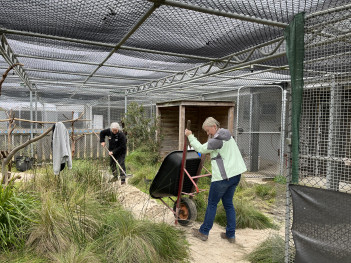
Image 6: Volunteers Helen & Ailsa laying sand pathways
A pelican was rescued by Birdlife Australia at San Remo on 12 June. The male bird was underweight and had a limp, which was discovered to be a broken toe with concern of bone infection. The Wildlife Victoria Travelling Vets attended on a weekly basis to monitor his recovery. The bird also seemed to be extremely humanised, which can be a major issue in the wild for pelicans as they can start showing aggressive behaviours towards people and become a nuisance. So great effort went into encouraging him to be wary of humans. After six weeks in care (and a lot of fish later!) he was finally deemed fit for release and returned to the pelican colony at Fishers Wetland. As a monitored animal, we have had several reports of sightings of him in the area, both at San Remo and Newhaven and he is doing very well!
Eastern barred bandicoot rescue, rehabilitation and release
After being rescued alive from her deceased mother’s pouch by a Penguin Parade staff member, we had our first Eastern barred bandicoot joey in care. With assistance and advice from Melbourne Zoo veterinarians, the joey spent one week with a foster carer before returning to the Wildlife Rehabilitation Centre. Our staff nurtured and raised her for six weeks in purpose-built threatened species pens, until she was ready for release. It was amazing to see her quickly grow from a highly dependent 66g pouch young to a feisty young 300g sub-adult!
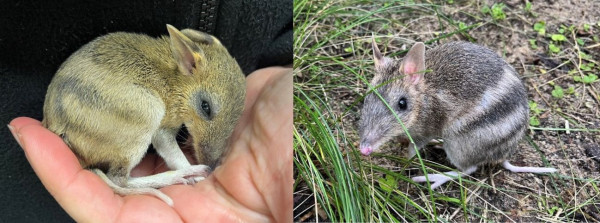
Image 7 & 8: Eastern barred bandicoot joey
Possum browsing study
By Zoe Kellett and Abbey Connell, Cameras in Conservation Interns
As an initiative of the Phillip Island (Millowl) Wildlife Plan, a study has commenced in Oswin Roberts Reserve to quantify the impact of possum browsing on swamp gums (Eucalyptus ovata) and to evaluate the effectiveness of tree banding in safeguarding tree health from over-browsing. The study is focused on 32 identified swamp gums that are exhibiting varying levels of browsing damage. These trees were randomly divided into two groups: the treatment group and the control group, with 16 trees in each.
For the treatment group, measures were taken to exclude possums from browsing the trees. This involved isolating the canopies from surrounding trees and the ground. Minor trimming of surrounding branches achieved this, and the trunks of the trees were securely banded with polyurethane sheeting. The control trees remain unmodified, to compare the browsing impacts of possums.
To monitor changes in tree canopy cover over time, a remote camera has been set up to take an image of the canopy of each tree daily. These images will be analysed to quantify changes in tree canopy cover over time in the presence and absence of possums. This long-term study will be utilised in conjunction with possum density surveys to inform future possum management strategies.
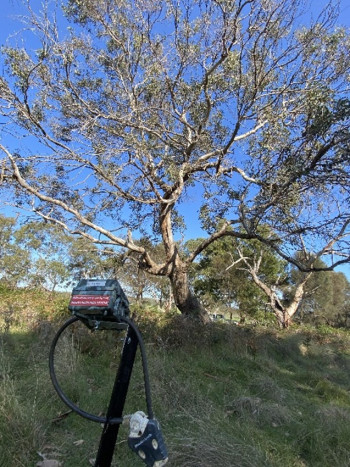
Image 9: Camera monitoring tree canopy density
Pest control
Cameras in conservation
By Zoe Kellett and Abbey Connell, Cameras in Conservation Interns
Recently cameras have been used to detect feral cats in the Ramsar protected areas of Observation Point and Rhyll Inlet, resulting in around 437,000 images which our Cameras in Conservation interns have examined in search of cats. The focus is now on identifying individuals from their distinctive coat patterns so cat densities and detectability can be determined.
Cameras which were previously deployed at Observation Point for several months have been retrieved and will soon be replaced with new 4G cameras at the Ramsar site. These cameras will be coupled with machine learning artificial intelligence from eVorta which will process images in real time and send alerts to program staff for a rapid response to feral cats in the future. To ensure the most accurate classification of images training of the AI is currently underway, teaching it to better recognise species of interest on Phillip Island (Millowl).
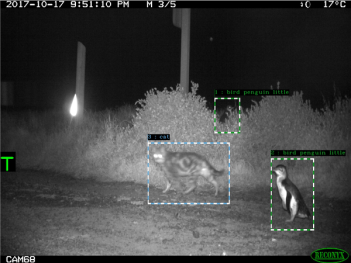
Image 10: Camera trap image from Summerland’s being trained in the eVorta AI platform
Animal pest monitoring
By Stuart Murphy
A total of 1,507 trap nights were carried out in cat trapping sessions along the south coast from Cape Woolamai to Berrys Beach, and along the north coast from Silverleaves to Observation Point. Feral cat detection dogs and spotlight hunting have also been used in the pest cat program. There was also an audit of a 17km pest animal exclusion fence at Mount Rothwell’s Tiverton property near Mortlake, which has had numerous breaches over the past six months jeopardising threatened species’ recovery. Surveys were undertaken, and recommendations provided to reduce the likelihood of fox incursions in the future.
Another survey was conducted at Widgewah property near Seymour with detection dogs Jazz, Macey and Flash to help confirm eradication of foxes with the 60ha fenced reserve.
Fox detection dog surveys and camera trapping have been undertaken in response to reports of fox sightings at Newhaven, Cowes and along the south coast near Pyramid Rock, with no evidence found to date.
Feral cat detection dogs are continuing to monitor for evidence of feral cats at priority sites on Phillip Island including Observation Point and Summerland Peninsula. Surveys have revealed cat scats which have been mapped and collected to examine diet and genetics of feral cats.
As a part of pest management, there were three feral cats detected and removed by program staff near the Nobbies.
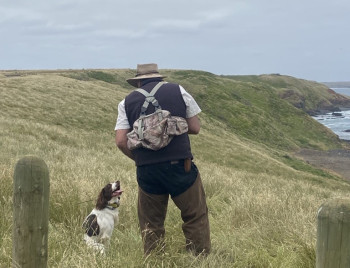
Image 11: Fox detection dog surveying coastline on Summerland Peninsula
Science published
Dupuis, B., A. Kato, N. Joly, C. Saraux, Y. Ropert-Coudert, A. Chiaradia and M. Chimienti (2023). "COVID-related anthropause highlights the impact of marine traffic on breeding little penguins." BioRxiv: 2023.2006.2030.547199.
Joly, N., A. Chiaradia, J.-Y. Georges and C. Saraux (2023). "Unpacking the Lifelong Secrets of Little Penguins: Individual Quality, Energy Allocation, and Stochasticity in Defining Fitness." Evolution.
Pulvirenti, J., R. D. Reina and A. Chiaradia (2023). "Exploring subcolony differences in foraging and reproductive success: the influence of environmental conditions on a central place foraging seabird." Royal Society Open Science 10(6): 220362.
Ramírez F, Cordón Y, García D, Rodríguez A, Coll M, Davis LS, Chiaradia A and Carrasco JL (2023]. Large‐scale human celebrations increase global light pollution. People and Nature. DOI:10.1002/pan3.10520
Climate change
Firebreak at Mandeville Road - Future Proofing Little Penguin Habitat
By Simon Heislers
To reduce bushfire risk, protect penguin habitat and create green fuel breaks, non-burn vegetation treatments and planting of 40,000 new fire-retardant plants is being conducted at the Summerland Peninsula. The works will improve and maintain firebreaks to reduce flammability and reduce land temperature, as well as limit the intensity and impacts of any future bushfires on wildlife and the environment.
The new firebreaks on the Summerland Peninsula have now been aerially mapped to quantify the improvement of habitat over time as flammable vegetation type are replaced by more succulent fire-tolerant species.
With an awareness of the risk that extreme temperatures and heatwaves pose to penguins nesting in exposed areas of the Summerland Peninsula, Nature Parks staff undertook a survey of nest boxes to identify those most exposed and for which resident nesting penguins would be at greatest risk to extreme summer conditions. Several areas were identified as being at high risk and prioritised for habitat improvement works to reduce the risk of heat stress and minimise the likelihood of mortalities occurring during heatwave events such as occurred during March 2019.
On 13–14 September Year 11 Scotch College students worked with Nature Parks conservation staff to build teepee-like structures from branches over exposed nest boxes around which indigenous, herbaceous plants (bower spinach and seaberry saltbush) were planted. These plants are relatively fast growing with good insulative properties. The branches used for the built structures were sourced from swamp paperbark cut from the recently established firebreaks created to help reduce the risk of fire impacting the Peninsula and the Summerland penguin colony. The plants in combination with the branch structures are designed to promote shading and cooling of nest boxes, and ultimately reduce the heat stress of nesting penguins during extreme summer conditions in the future.
These activities form part of the conservation effort of the ‘Future Proofing Little Penguins’ project which aims to help protect the Summerland Peninsula and the little penguin colony from the increasing threat of bushfire and heatwaves due to climate change. To learn more about this project and stay up to date please visit this page.
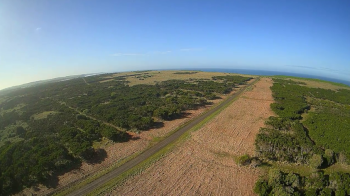
Image 12: Firebreak at Mandeville Road





